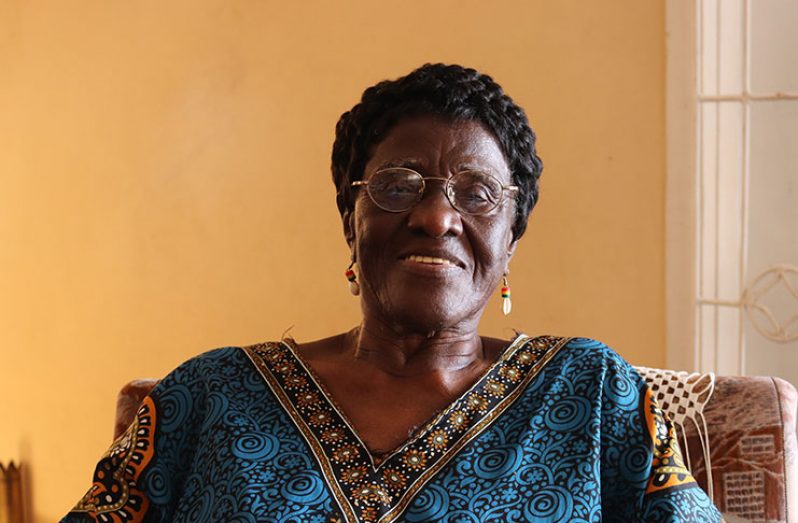– Highlighting the contributions and achievements of Lucille Cadogan
“THE heights by great men reached and kept were not attained by sudden flight, but they, while their companions slept, were toiling upward in the night”, Henry Wadsworth Longfellow.
Just over two weeks ago several outstanding individuals were identified for National Awards, to mark Guyana’s 50th Republic Jubilee. Lucille Cadogan was awarded the Medal of Service for her contribution over 50 years of professional and voluntary service in the field of Psychology, Education and Art, in Guyana.
Lucille Cadogan completed her training in education with a Master’s Degree in Psychology and a minor in English. Although she had longed to be an artist, during her years of study, she became quite fascinated with Psychology (the study of human behaviour). Her fascination did not diminish her passion for art and craft. While she studied at the University of London Institute of Education, she joined the art and craft division for her practical work. The class provided much insight into the correlation between art and psychology. She was very much fascinated at how art was used to test the intelligence quotient of a child.
Lucille served in the Ministry of Education from 1944 – 1992. In 1968 she was the Head Mistress of Overwinning Secondary School. During her tenor, she made art one of the main subjects in the school’s curriculum. In 1971 – 72, she worked as an Education Officer. On her visits to schools, she often encouraged the art program. In 1987 she became a founding member of the Guyana Women Artists’ Association (GWAA). The group comprised women who felt that art was only assigned to men and that the idea needed to be changed. As a member of the group she painted abstract, landscape and still life. She particularly enjoyed abstract and landscape work. She used every travel opportunity to capture landscape scenes both within Guyana and beyond our borders. According to Lucille, her best abstract pieces were created during a period of unrest in Guyana. It was when she was confined to her home that she was able to explore several aspects of abstract art. Lucille attributes her background in psychology as the driving force that helped her to meet different persons at different levels.
During our interview, I became fascinated with the correlation between psychology and art. I wanted to find out more so I asked her for a book that would guide my understanding. She gave me a book entitled, the psychology and education of the young by Margaret Munro. In a chapter about the nature of perceptual learning, I gained a deeper understanding of the brilliance of artists who create depth and distance in their paintings. As humans, we sometimes interpret or misinterpret, distance. “We can cover a tall tree on the other side of the park by holding up one hand – but we do not assume that it has shr8unk to fit. On the contrary, when our eyes rove over a landscape or an interior we do a good job seeing things the right size and shape, wherever they are. We usually have to make a special effort to see that a receding object looks smaller and smaller, or else have it presented to us in special experimental conditions.” From this simple excerpt, I can see how art is used to measure intelligence.
I plan to do some more reading on this topic simply because as an artist I’m excited to share the endless possibilities of art and how it is vital to our development. I, along with the other members of the Guyana Women Artists’ Association, celebrate with Lucille, a founding member, on her Medal of Service. She has inspired us immensely and we hope to continue her legacy.
Leaving some words of advice for young people she said, “the road is not straight in this life, the ladder you are climbing is very steep, but don’t give up. Even if it’s in the art field, or education field, whatever you try to do, do it with a will. There are times when you would be looking back but you look back to use the experience to push you forward. Keep climbing the ladder to success.”
Speaking to those from her generation she said, “I am hoping that those persons who are as young as I am would be leaving footprints on sands of time for others to step into, worthy footprints.”
In closing she states, “I am, with all humility, I am happy. I say with all humility because it has been conferred upon me that I have no regret for the work that I’ve done for my country.”



.jpg)










